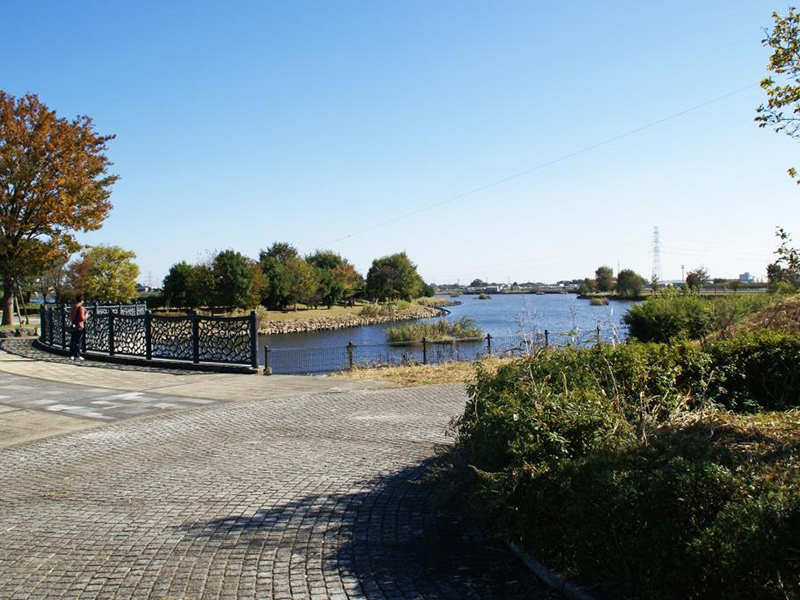Ancient Lotus Park (Kodaihasu no Sato)
sightseeing
From mid-June to early August, 12,000 stocks of 42 different types of lotus flowers bloom on the surface of this lotus pond. The Gyōda lotus (ancient lotus) is a primitive form with few petals; it is said this variety of lotus is from about 1,400 to 3,000 years ago. Lotus flowers are best viewed midmorning. There are aquatic plant botanical gardens, aquatic bird lakes, peony gardens, plum tree groves, and a spot for flower viewing (hanami) cherry blossom trees, making it a place to go to feel the beauty of nature all year round.
In addition, from mid-July to mid-October, rice paddy art is at its prime and can be viewed from the Ancient Lotus Hall’s Observation Room. The rice paddy art of Gyōda City started in 2008, with annual rice transplanting taking place with the help of several volunteers and participants. Not only are the designs original, but some have been featured in movies, TV shows, games. In 2015 it was recorded in the Guinness World Records as “the world’s largest (rice paddy art).”
Basic Information
Location
Gyōda-shi Kobari 2375-1
TEL
048-559-0770(Kodaihasu Kaikan)
FAX
048-559-0784(Kodaihasu Kaikan)
Event Information
・Every year in early July the "Lotus Matsuri" takes place ・Every year in late November to early January, the park is illuminated
Business hours / Fee
Business hours
〇 Normal Periods
・Park is open all day
・Kodai Hasu Hall is open from 9:00~16:30
※Final reception will be until 16:00
・Vendors will be open from 9:00~16:00
・The udon store will be open from 11:00~14:00
〇 During periods in which the lotus is in full bloom (End of June to Early August)
・park is open all day
・Kodai Hasu Hall is open from 7:00~16:30
※Final reception will be until 16:00
・Vendors will be open from 7:00~16:00
・The udon store will be open from 9:00~14:00
・Park is open all day
・Kodai Hasu Hall is open from 9:00~16:30
※Final reception will be until 16:00
・Vendors will be open from 9:00~16:00
・The udon store will be open from 11:00~14:00
〇 During periods in which the lotus is in full bloom (End of June to Early August)
・park is open all day
・Kodai Hasu Hall is open from 7:00~16:30
※Final reception will be until 16:00
・Vendors will be open from 7:00~16:00
・The udon store will be open from 9:00~14:00
Regular holiday
〇 Normal Periods
・Park
No holidays
・Kodai Hasu Hall、Vendors
Monday(Open if it is a holiday)/The following day of a holiday (Open in case of Saturday or Sunday)/New Year's Holiday
・Udon store
Monday・Tuesday(Open in case of holiday) / The day after a holiday (Open on Saturday and Sunday)/New Year's Holiday
〇 During periods in which the lotus is in full bloom(End of June to Early August)
・Park, Kodai Hasu Hall, Vendors, Udon store No holidays
・Park
No holidays
・Kodai Hasu Hall、Vendors
Monday(Open if it is a holiday)/The following day of a holiday (Open in case of Saturday or Sunday)/New Year's Holiday
・Udon store
Monday・Tuesday(Open in case of holiday) / The day after a holiday (Open on Saturday and Sunday)/New Year's Holiday
〇 During periods in which the lotus is in full bloom(End of June to Early August)
・Park, Kodai Hasu Hall, Vendors, Udon store No holidays
Fee
The below fees will be necessary upon entry into Kodai Hasu Hall. ・Private Adults (Older than high school) 400 yen, Children (Elementary・Middle School) 200 yen・Group (More than 20 people) Adults (Older than high school) 320 yen Youth (Elementary・Middle School) 160 yen
How to get there
Public transport
・From Gyōda Station (East exit) of JR Takasaki Line take the local bus that circles around the tourism sights left・lock-wise and get off at “Kodai Hasu No Sato”
Car
・About 25 minutes from "Hanyū" Interchange of Tohoku Expressway ・About 40 minutes from "Higashi Matsuyama" Interchange of Kan-Etsu Expressway ・About 35 minutes from "Shiraoka Shōbu" Interchange of Ken-o Expressway
Parking
・Regular cars are charged 500 yen and Middle-sized / Large-sized cars are charged 1,500 yen during periods in which the lotus are in bloom (End of June to Beginning of August)
・The number of parking spaces available for Regular cars are 490 and 8 spaces for Middle-sized/Large-sized cars
・The number of parking spaces available for Regular cars are 490 and 8 spaces for Middle-sized/Large-sized cars
Other
Internet Wi-Fi
Free Wi-Fi環境有
Universal design
AED installation
〇
General / Wheelchair Shared Elevator
〇
Wheelchair rental
〇
Wheelchair-accessible slope
〇
Wheelchair entry
〇
Wheelchair parking
〇
Breastfeeding room
〇
Compatible with diaper changing tables
〇
Baby keep or baby chair
〇














